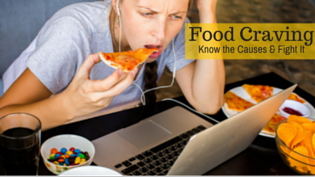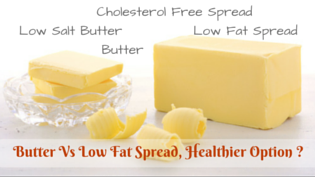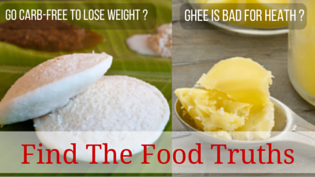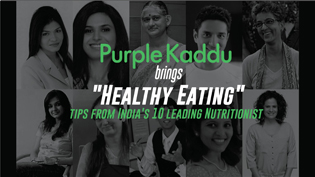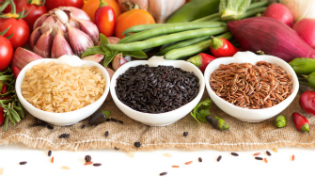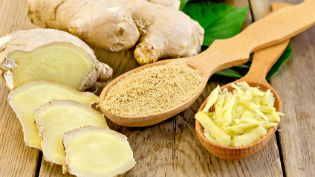
20 food myths you still think are True
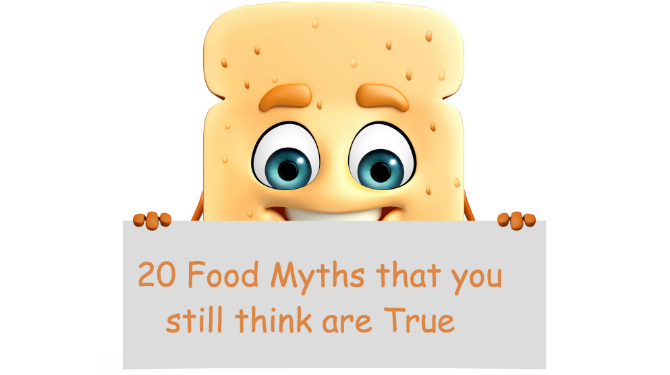
Myths surrounding food have been a part of wellness concern for far too long now. With the growing need for having healthier eating habits, we’ve seen a wide array of beliefs regarding consumption of certain foods come up time and again.
With the changing trends in nutrition, we’ve seen misconception and false understandings circle mainstream nutrition. If you’ve sworn off your favorite foods believing them to be harmful for your health- it’s time to throw some light on the myths. Do read the 20 common food misconceptions we have debunked for you, Happy Eating
#1 Brown bread is better than white
This is a very common misconception as consumers relate the colour brown to whole grain bread and hence a healthy option. But this is not true. The brown bread is the same as white; its brown colour is due to the addition of caramel. For healthier options, look for terms such as 100% whole wheat on the bread packet or check the ingredients listed.
#2 Diet sodas are better than regular sodas
The artificial sweeteners in diet soda make your pancreas release insulin, which sends your body into fat storage mode and leads to weight gain. Read our blog to know why you quit soda
#3 Chocolates causes acne
Studies have proved that eating chocolate is not the cause of acne. While cheap high sugar chocolates can trigger acne, but occasional indulgence in dark chocolate can be a part of healthy lifestyle. Acne is believed to be the cause of high bacterial levels and oil on the skin.
#4 Eggs are bad for heart
The egg has got a bad reputation as a problem maker to the heart, but this is a misconception. The cholesterol in egg which has given it its bad name does not do much harm to the body, as the liver produces lesser cholesterol to compensate for the cholesterol from the egg. Saturated and trans-fats is what hikes your cholesterol and thus should be avoided. Besides egg is a good source of fat soluble vitamins and some essential nutrients like selenium and Vitamin A.
#5 Milk is a complete food
A big NO. Milk is a good source of calcium, fats, protein, Vitamin A, certain biopeptides but it lacks in many essential nutrients like vitamin C, iron, zinc and fibre too. These are important for proper functioning of the body. So next time you are off to work or send your child to school with just a glass of milk as breakfast, you are devoiding your body of complete nutrition. Remember milk is a part of your meal; it is not a meal in itself.
#6 Honey is better than sugar
So you think swapping honey with sugar is a clever trick to “sweet cheat” and keep the extra kilos at bay. Well, you may want to think again as honey also gives you similar calories like sugar and jaggery. Besides honey’s sweetening capacity is lesser than sugar, leading to more consumption. Honey's sweetness is because of fructose content in it, which has been linked with obesity. In short, you might want to restrict pouring honey generously over your food. As the saying goes too much is too bad.
#7 Peanuts are fattening
Though peanuts have fats, they are the good for you. They contain mono unsaturated fatty acids, especially oleic acids, which help lower LDL or bad cholesterol and increases HDL or good cholesterol level in the blood
#8 Coconut oil raises cholesterol levels
Not really. Researches show that coconut oil actually raises the good cholesterol(High density lipoproteins) levels which is beneficial to health. This good cholesterol helps lower the bad cholesterol(Low density Lipoproteins) levels and actually clears the blockage in the arteries, thereby protecting the heart. The medium chain fatty acids present in coconut oil increases the rate of metabolism..
#9 Avoid papaya during pregnancy
Any pregnant Indian woman will have heard this advice at least once during her pregnancy.
It is a widely believed myth, that eating papaya when you’re pregnant or trying to conceive can be a bad idea as it can lead to miscarriage, therefore you must avoid eating papaya altogether. However, what not many people know is, eating unripe papaya can be harmful.
Unripe papaya latex and leaves are suspected to contain chymopapain which is believed to induce abortion or early labor. Unripe papaya latex may act like prostaglandin and oxytocin, which make the body, undergo labor. Ripe papaya, on the other hand is considered to be safe, and is in fact a good source of Vitamin A and C.
#10 Citrus fruits such as oranges and lemons are acidic
The hydrochloric acid produced by the parietal cells in the stomach, forms the normally acid medium of the stomach; and this secretion is not affected by citrus fruits.
The metabolism by the body of almost all fruits results in an alkaline residue, and not acidic.
Therefore, the concept regarding citrus fruits making the body acidic is nothing more than a myth.
#11 Eating mangoes will lead to acne eruptions
Many believe that since mango come during the summers, it creates heat in the body causing breakouts.
Mango holds a package of nutrients such as riboflavin, vitamin B6, A, C, E, K, niacin, folic acid, thiamin and pantothenic acid.
Possibly, it would be surprising to know that mangoes are good for the skin’s health. They are rather known to cure acne with the presence of Vitamin C which is known for its antioxidant properties.
Busting the usual myth, mangoes, in fact, clean clogged pores and eliminate pimples thereby healing the skin, internally as well as externally.
#12 Eating only salads will help you to lose weight
For sustainable weight loss, one needs to follow proper balanced diet. Eating veggies is a temporary solution to weight loss which comes along with weakness, constipation and other problems.
#13 "Cold" Foods cause Cough & Cold whereas "Warm" Foods Cure
Common myth is sour food, astringent food & Bananas are “cold” foods inducing coughs & colds wheres Nuts, Dry Fruit & Honey being warm can cure common cold. There are no cold foods or hot foods just as there is no such thing as good food or bad food. Individual allergic reaction may bring about symptoms as our immune system may react to a particular food with a cold, cough, fevers if it is sensitive to it.
#14 A product has zero Calories if the label on it says it is fat-free
When a label reads ‘fat-free’ it does not necessarily mean that the product is devoid of any Calories at all. It simply means that a fat substitute has been used instead of fat. A fat substitute is a food product with the same functions, stability, physical, and chemical characteristics as regular fat, but with fewer Calories per gram than fat
#15 Fresh food is better than frozen
False. Frozen foods are as nutritious as their fresh counterparts, in some cases even fresher. Fruits and veggies are picked once they have reached complete maturity and are full of nutrients and quickly frozen at that stage. So what you get is nutritious produce which is not inferior to the fresh produce as freezing will reduce nutrient loss and maintain the quality of the food.
#16 Eating small and frequent meals boost your metabolism
Food intake has a negligible effect on metabolism. Some foods, including those with caffeine, may slightly and temporarily increase metabolism, but the effect is too small to lose weight. What most affects your basal metabolic rate (BMR), the rate at which your body burns calories, is the body composition and size.
#17 Eating after 8 pm can cause weight gain
If total calorie intake for the day is more that what you are burning, it can lead to weight gain regardless of what time you are eating. But if you are eating regular healthy meals throughout the day and continue the same post 8pm, there’s no reason to stress.
#18 Eating less will make your stomach shrink
Your stomach will not shrink if you eat less. It has an amazing capability to expand to meet the intake levels. If you eat smaller portions of food for an extended period of time, your stomach will not be accustomed to eating large meals, making you feel uncomfortable. Food remains in the stomach for 4-5 hours after which the stomach returns to its normal size.
#19 Weight reflects your fitness levels
Your weight has little to do with your fitness levels. Muscle weighs more than fats, so it’s common to see an increase in weight, few weeks after starting weight lifting regime. Measure your fitness by how you feel overall.
#20 There are two types of cholesterol: Good and Bad
There is only one type of cholesterol, but two main vehicles that carry them throughout the body. They are known as HDL and LDL. Cholesterol is only the passenger. Yet the level of HDL and LDL is of importance as it indicates your risk of getting heart disease. A high LDL level indicates your heart is at a higher risk of disease whereas a high level of HDL indicates a lower risk of heart disease.



